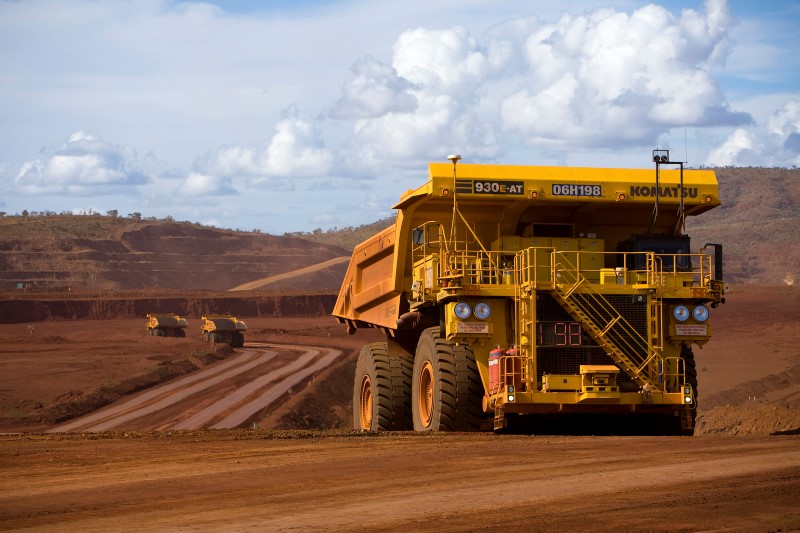Needed to produce new technologies including electric vehicles, wind turbines, solar panels and batteries, we can expect a big increase in the mining of metals and minerals such as lithium, copper, nickel and rare-earth elements (REEs) in the years to come.
However, the production of these minerals comes with some major sustainability issues. It uses a lot of water, leaves a lot of waste and consumes a lot of energy, generating heavy carbon emissions.
Mining companies must address these harms to reduce risk and maintain a social licence to operate. Increasingly, investors and consumers are demanding that companies take these issues seriously. Failure to respond could undermine reputation and lead to difficulties in raising capital.
The industry’s troubling activities are widely known, from its chemical pollution to exorbitant water use, the destruction of environments and biodiversity, along with human rights abuses.
Metals and mineral production is said to be responsible for some 10% of global energy-related greenhouse gas emissions while the Department of Climate Change, Energy, the Environment and Water found that between 1990 and 2019, Australia’s mining industry more than doubled its carbon emissions.
In response to rising metals and minerals demand, mine production continues to increase, as do concerning mining practices. These include a major shift from underground to open cut mining methods, a sharp increase in waste rock production and a gap in rehabilitating formerly mined land.
Declining grades of the ore mined are also cause for concern. Consider that mining lower-grade ore is increasingly economic but greenhouse emissions and energy and water consumption are sensitive to ore grade.
For copper mining in Chile from 2001 to 2017, fuel consumption increased by 130% and electricity consumption increased by 32% per unit of mined copper, largely due to decreasing ore grade.
Carbon emissions
Production of energy transition minerals can lead to significant GHG emissions. These minerals typically require much more energy to produce per unit of product than other commodities, resulting in higher emissions intensity.
While emissions from energy transition mineral production are still relatively small due to their low production volumes, these emissions will grow alongside projected growth in demand.
This will be compounded by the fact that future production is likely to gravitate towards more energy-intensive pathways. Lithium production, for example, is shifting from brine-based recovery (mostly in Chile) to concentrate production from hard rock (mostly in Australia), which has an emissions intensity three times higher than brine-based production.
Demand from battery makers is increasingly moving from lithium carbonate towards lithium hydroxide with higher emissions profiles. Similarly, nickel is increasingly coming from laterite resources, which requires more energy to produce.
The emissions intensity of production varies significantly across companies and regions. But switching fuel sources, using low-carbon electricity and investing in energy efficiency can substantially reduce the emissions footprint in the near term. In the medium term, reducing or displacing diesel use in trucks is one element in many companies’ efforts to cut emissions.
Sustainability no longer ignored
The mining industry is advancing towards improved sustainability performance and transparency through detailed reporting.
The United Nations’ voluntary Global Reporting Initiative (GRI) mandates data on social, economic, environmental and human rights performance. In Australia, the statutory National Pollutant Inventory (NPI) is also relevant for mining and processing activities.
Both the GRI and NPI report on a range of useful environmental data on mining, yet they fail to mandate complete disclosure of large volume mine wastes such as tailings and waste rock, despite their significant environmental impact. That’s despite the considerable scale of these wastes and their potential environmental impact.
Separately, many mining companies are choosing to adopt sustainable practices, whether because they recognise the operational benefits in doing so or to enhance their social licence to operate.
Mine Tech Services director Tom Jordan has observed that, “A lot of the global companies are already making great progress in greener mining or moving into that space.
“The industry is pushing ahead or is ahead of what they’re being told to do by government legislation because they want to … swapping over to different power creation methods, using solar fields and other renewable sources instead of fossil fuel sources.”
Rio Tinto (ASX:RIO), for example, which aims to halve its direct emissions by 2030, signed a deal in January to underwrite the development of both solar and wind for use in its aluminium mines.
Addressing waste: Cobalt Blue
The vast scale of modern mine waste presents significant challenges. Seeking to address the damaging impact of mining operations, including mine waste, is Cobalt Blue Holdings Ltd (ASX:COB, OTC:CBBHF). Cobalt Blue’s ‘mine to battery markets’ strategy is seeking to produce a reliable supply of responsibly sourced battery metals to the world.
A key component of this strategy is its global mine waste reprocessing and restoration initiative, the Cobalt in Waste Streams Project (CWSP), in which critical minerals, like cobalt and nickel, are extracted from mine waste.
COB’s strategy also incorporates a planned cobalt-nickel refinery in Western Australia. The refinery aims to produce high-quality, responsibly sourced, battery-grade cobalt sulphate, contributing to entering critical mineral supply chains. The strategy also encompasses the Broken Hill Cobalt Project (BHCP) in far west New South Wales, which involves cobalt mining and refining.
Cobalt Blue recently entered into a strategic partnership with Regeneration Enterprises Incorporated, signing an MoU to use its proprietary minerals processing technology in unlocking commercial and environmental value at legacy mine sites.
The MoU extends the company’s scope to re-commercialise pyrite feed streams and other waste deposits in Australia and globally, addressing the significant potential within mine waste. The company has developed and proven its patented minerals processing technology, which economically recovers cobalt and elemental sulphur from pyrite deposits.
Its technology will be incorporated into Regeneration Enterprises’ suite of technologies and services aimed at full-value re-mining and site restoration. This collaboration seeks to pursue opportunities at legacy mine sites and accelerate development efforts while addressing the significant potential within mine waste.
